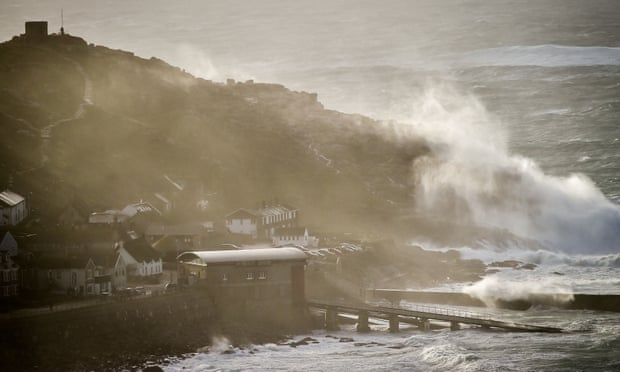The study, by researchers at the University of Strathclyde and the Observatoire Midi-Pyrénées at the University of Toulouse, found tiny plastic fragments in sea spray, suggesting they are being ejected by the sea in bubbles. The findings, published in the journal Plos One, cast doubt on the assumption that once in the ocean, plastic stays put, as well as on the widespread belief in the restorative power of sea breeze.
Around 359m tons of plastic was manufactured globally in 2018, and some studies suggest as much as 10% of it ends up in the sea each year.
Steve Allen, a PhD candidate at Strathclyde who co-led the study, said: “Sea breeze has traditionally been considered ‘clean air’ but this study shows surprising amounts of microplastic particles being carried by it. It appears that some plastic particles could be leaving the sea and entering the atmosphere along with sea salt, bacteria, viruses and algae.”
The “bubble burst ejection” of particles in sea fog or spray, described by Allen as “like soda in a glass when it hits your nose”, is a well-known phenomenon. But the new study is the first time microplastics have been shown to be ejected from the ocean.
“We keep putting millions of tonnes of plastic into the ocean every year,” said Allen. “This research shows that it is not going to stay there forever. The ocean is giving it back to us.”
Plastic debris, such as plastic bags and bottles, breaks down into smaller microplastic in the sea, often invisible to the eye. The microplastics in the sea spray were between five micrometres and up to 140 micrometres long. The researchers estimated that up to 136,000 tons of microplastic could be blown on shore by sea spray every year.
Dr Deonie Allen, the study’s co-research lead, said this was the result of “our mismanaged waste that comes from the terrestrial environment”.
She said the findings could help solve the mystery of where “missing” oceanic plastic goes after it leaks into the sea, a puzzle scientists have been trying to solve for years.
“The transport mechanism is quite complicated” said Allen. “We know plastic comes out of rivers into the sea. Some goes into gyres, some sinks and goes into the sediment, but the quantity on the sea floor doesn’t match the amount of plastic that would make up this equation. There’s a quantity of missing plastic.”
At least an estimated 8m tonnes of plastic enters the sea from land and coasts every year. One study estimates just 240,000 tonnes floats on the surface, leaving a puzzle as to where the rest goes. Various plastic ocean transport models have suggested “leaky basins” to explain areas that do not contain the quantities of plastic predicted.
“We know plastic moves in the atmosphere, we know it moves in water,” Allen said. “Now we know it can come back. It is the first opening line of a new discussion.”
The researchers captured water droplets from sea spray at Mimizan beach in Aquitaine, on the south-west Atlantic coast of France in the Bay of Biscay, using a “cloud catcher” and filters, set up on top of a sand dune. They analysed the water droplets for microplastics, sampling various wind directions and speeds, including a storm and sea fog. The sea fog generated by the surf produced the highest counts, of 19 plastic particles per cubic metre of air.
Previous studies, including one by the same authors that found microplastic pollution in a remote region of the Pyrenees mountains, have already shown that wind can transport microplastics in the atmosphere for long distances.
More about: #Microplastics
















































